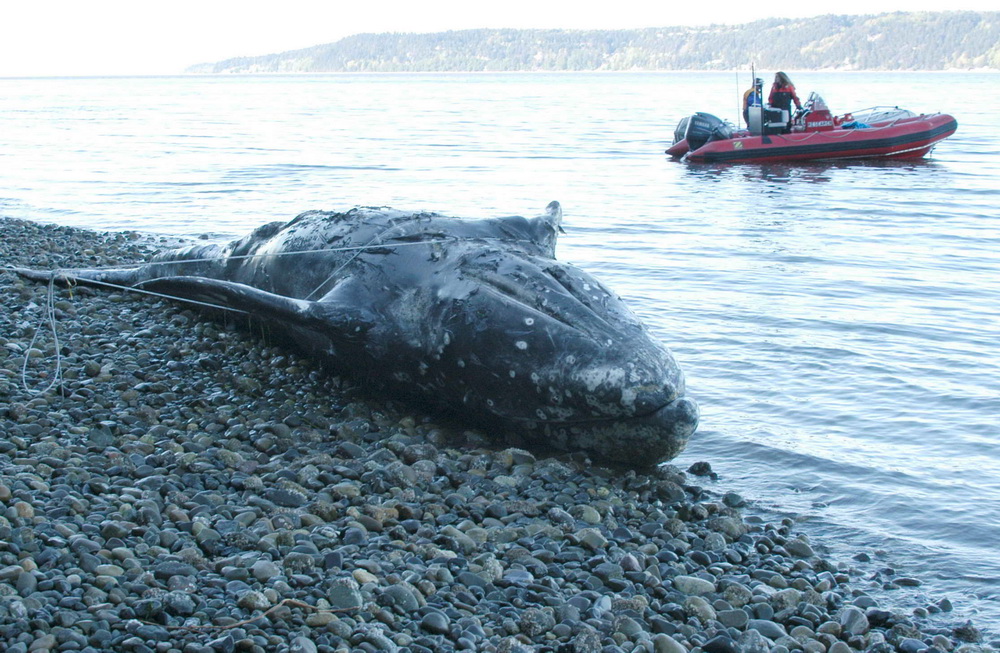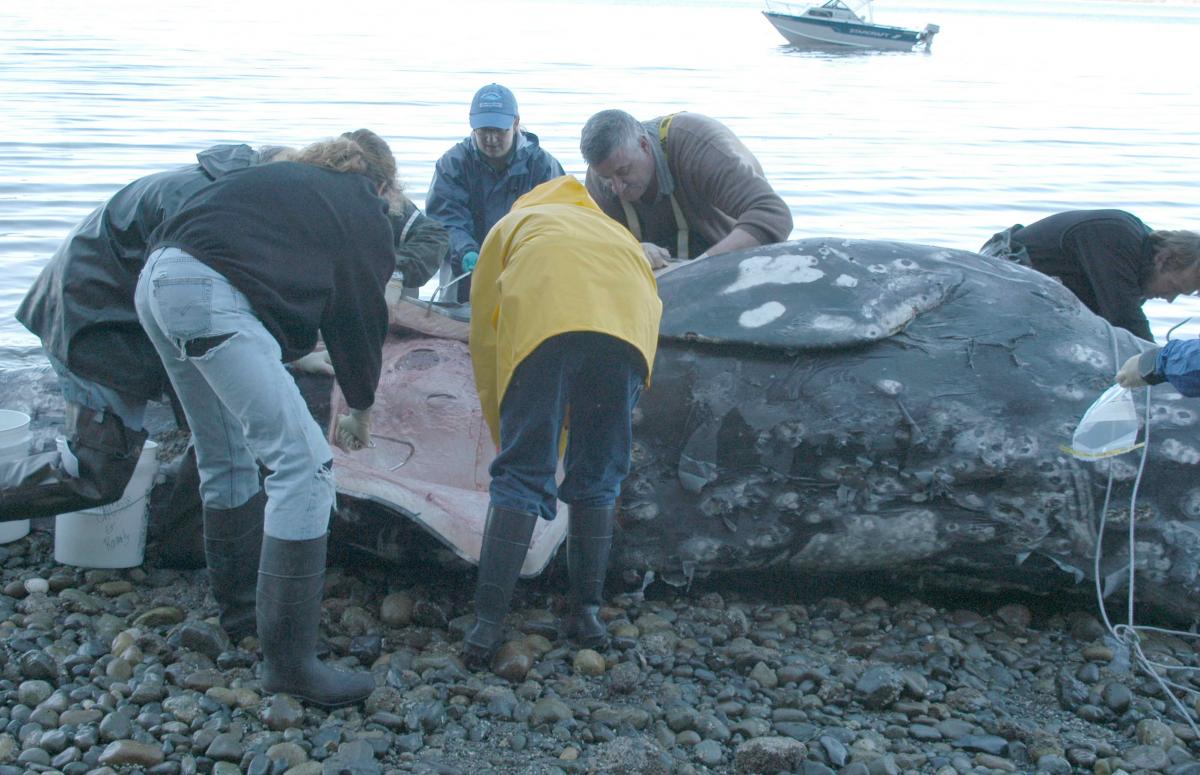On 18 April 2005 at about 2:30 PM Cascadia Research was notified of a dead floating gray whale near Sandy Point on the east side of Whidbey Island. Two researchers with Cascadia who were conducting a survey for gray whales in the area were able to be on scene within a half-hour. The whale was secured overnight and successfully towed mid-day on 19 April to a remote spot on of DNR land on Camano Island. The move was conducted by two of Cascadia’s rigid-hull inflatable boats and the 90’ passenger ferry Two Harbors (donated by Nichols Brothers Boat Builders, Global Research and Rescue, and Aqua Express).
An examination of the whale was conducted on the beach during the afternoon and evening of the 19th by biologists and veterinarians with Cascadia Research, National Marine Fisheries Service, and the Washington Department of Fish and Wildlife. A pathologist with the British Columbia Ministry of Agriculture and Food was also present. Support was also provided by the Central Puget Sound Marine Mammal Stranding Network, Orca Network, and the Whale Museum. Only preliminary results of the external examination are available at this time and results from tests of tissues may not be available for several weeks.
The whale was a 7.56m (25 feet) male gray whale and based on size is a slightly under-sized yearling (born around January 2004). Girth measurements were below normal for an animal of this size and combined with the dry-looking blubber indicated the animal was thin and probably not in great nutritional condition at the time of death. For the length and girth of the animal, the weight was likely about 3,500 kg. Identification photographs of the stranded whale do not appear to be the same younger individual seen earlier in the year in Puget Sound near Bremerton.
The necropsy went extremely well, the animal was fairly fresh and we were able to collect many tissues for testing for contaminants, disease, and pathology. There was evidence of hemorrhaging on the left side and underneath the head consistent with blunt-force trauma from something like a strike from a vessel. Because the animal was thin and results of other tests are not available, it is possible other factors were involved as a cause of death.
This is the first confirmed stranding of a gray whale this year in Washington State. Every year from 1 to 28 gray whales wash up dead in Washington State. The average has been about four a year. A major mortality event occurred in 1999 and 2000 resulting in more that 20 strandings each year in Washington and 100s of other whales found dead along the range of the gray whale from Mexico to Alaska. Many of these animals were emaciated. The gray whale population had been recovering from commercial whaling and had increased to over 20,000 animals by the late 1990s. The mortality event in 1999 and 2000 reduced that population down to an estimated 17,000. Since 2000, mortality has been low. This is the first gray whale death this year.
Each spring, a regular group of gray whales return the waters around Whidbey Island to feed primarily on ghost shrimp. The same animals return each year. Cascadia Research maintains a catalog of identified gray whales based on the markings along the back of the animal. Some of the animals currently in the Whidbey Island area have been seen almost every year since the early 1990s. Toward the end of the examination, a live whale swam by as we were cleaning up and this turned out to be a whale named “Patch” which has been seen in this area since 1991.
Currently there are at least six gray whales in the Whidbey Island area, at least two in southern and central Puget Sound, and one in Hood Canal. Additionally, gray whales continue to migrate past the Washington coast. Contacts for additional information include: John Calambokidis, Cascadia Research, 360-943-7325.

